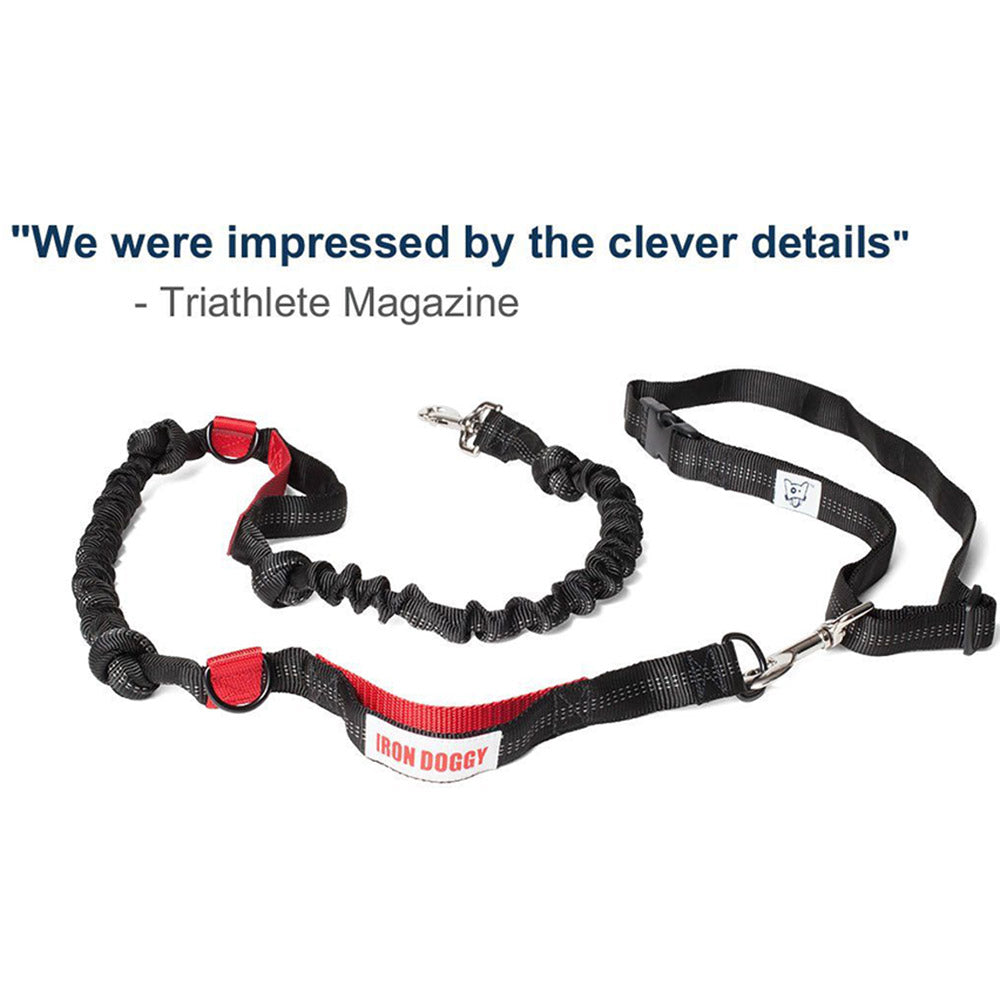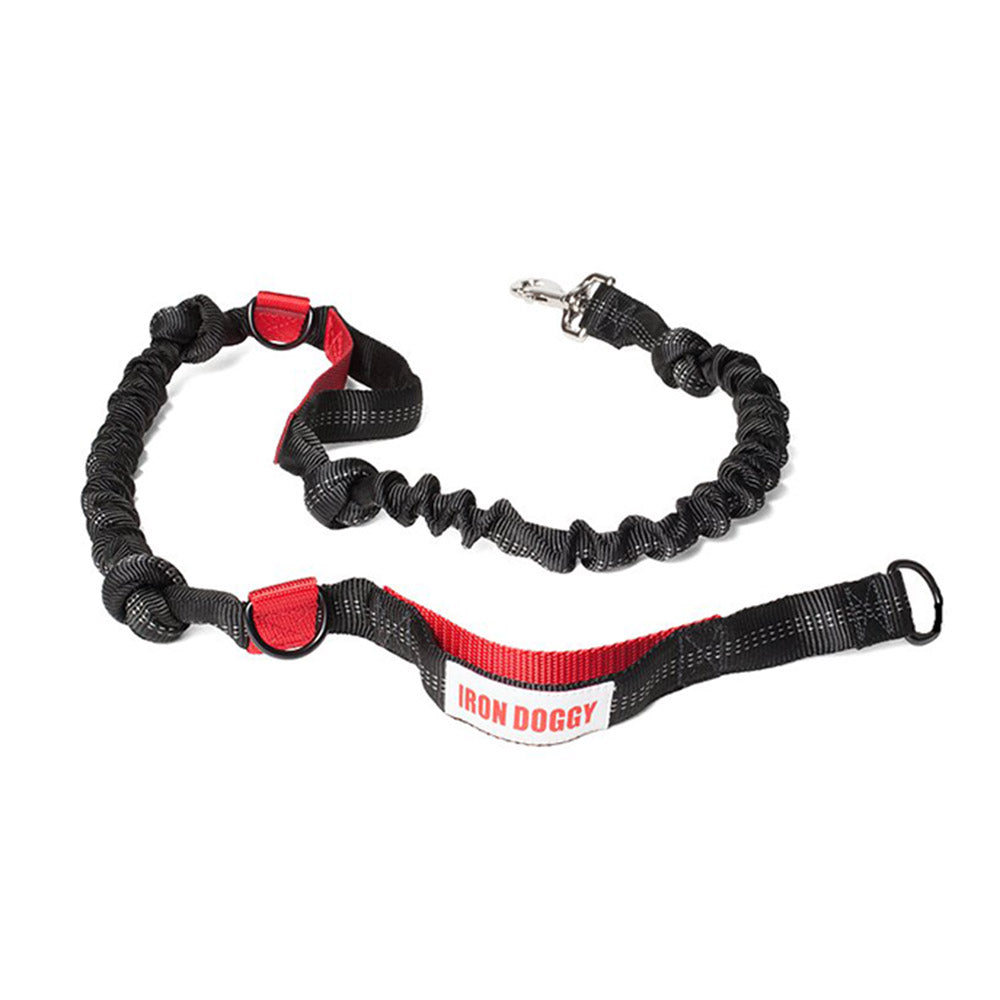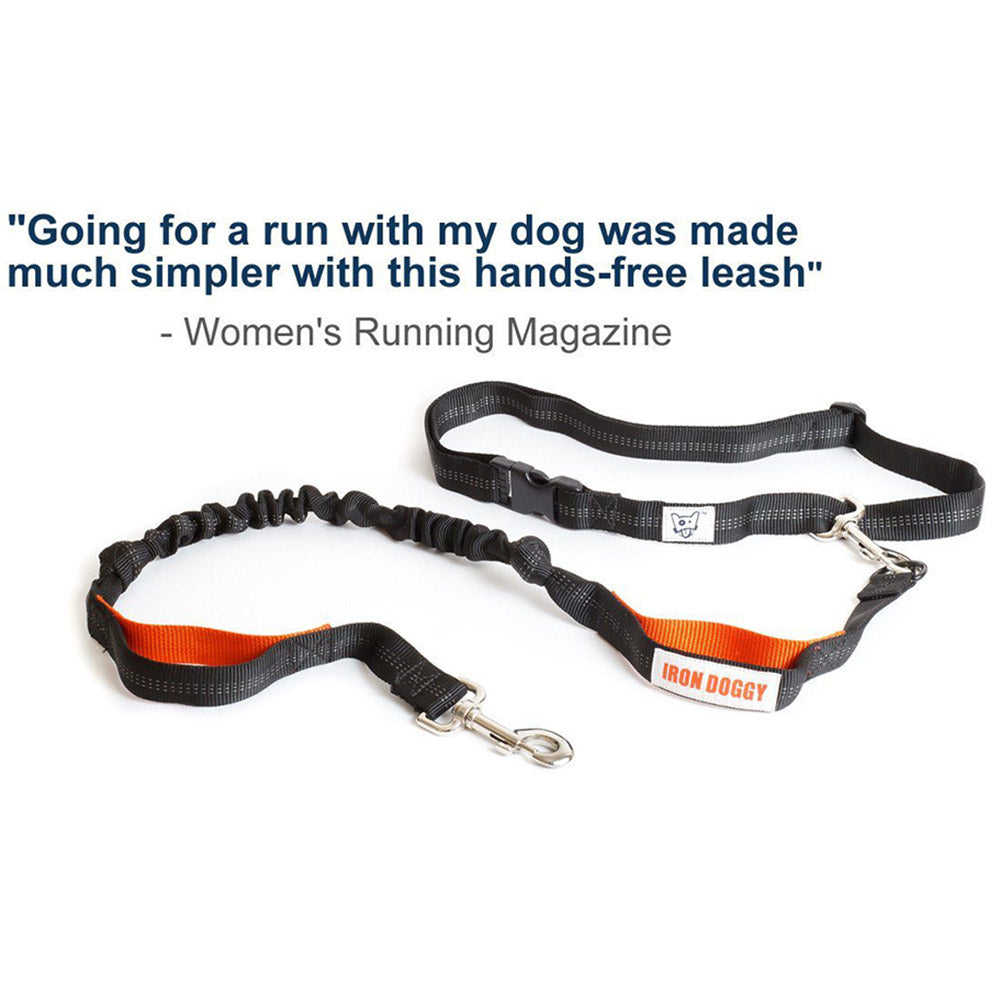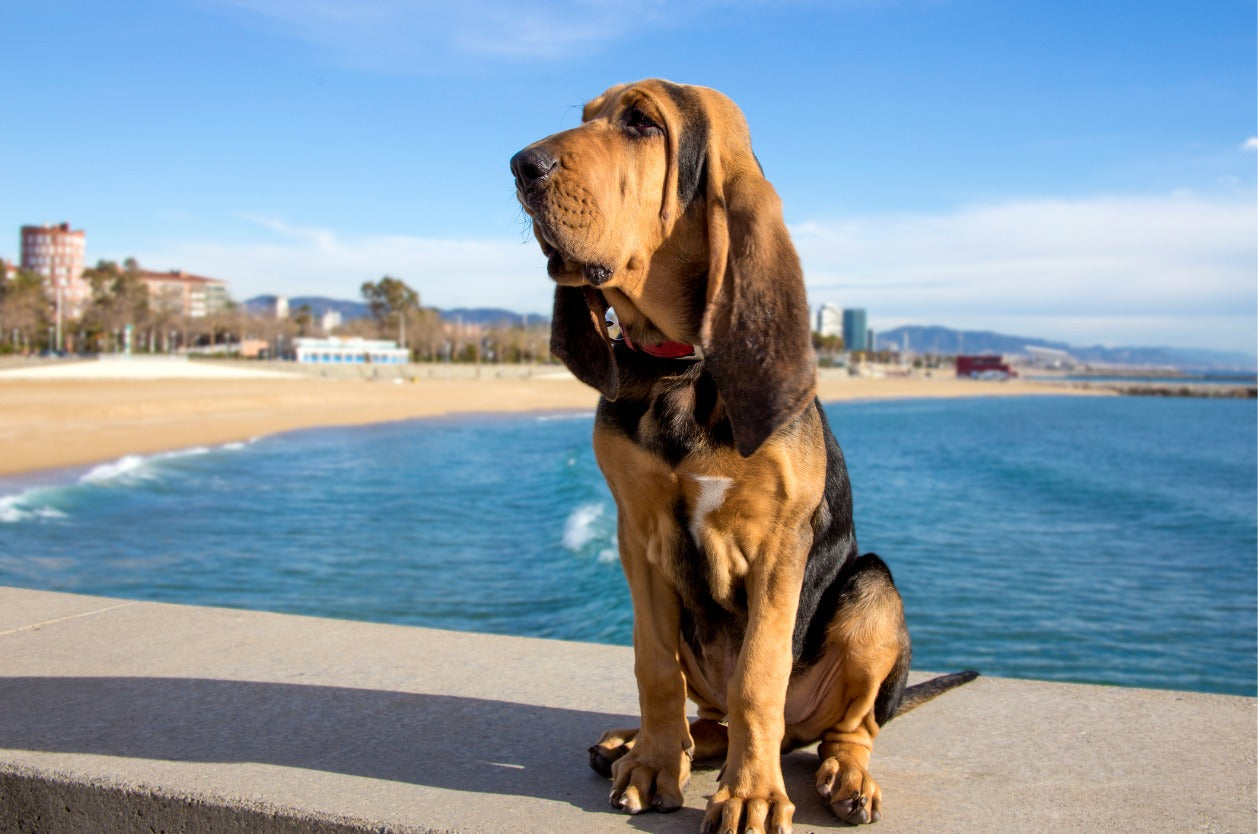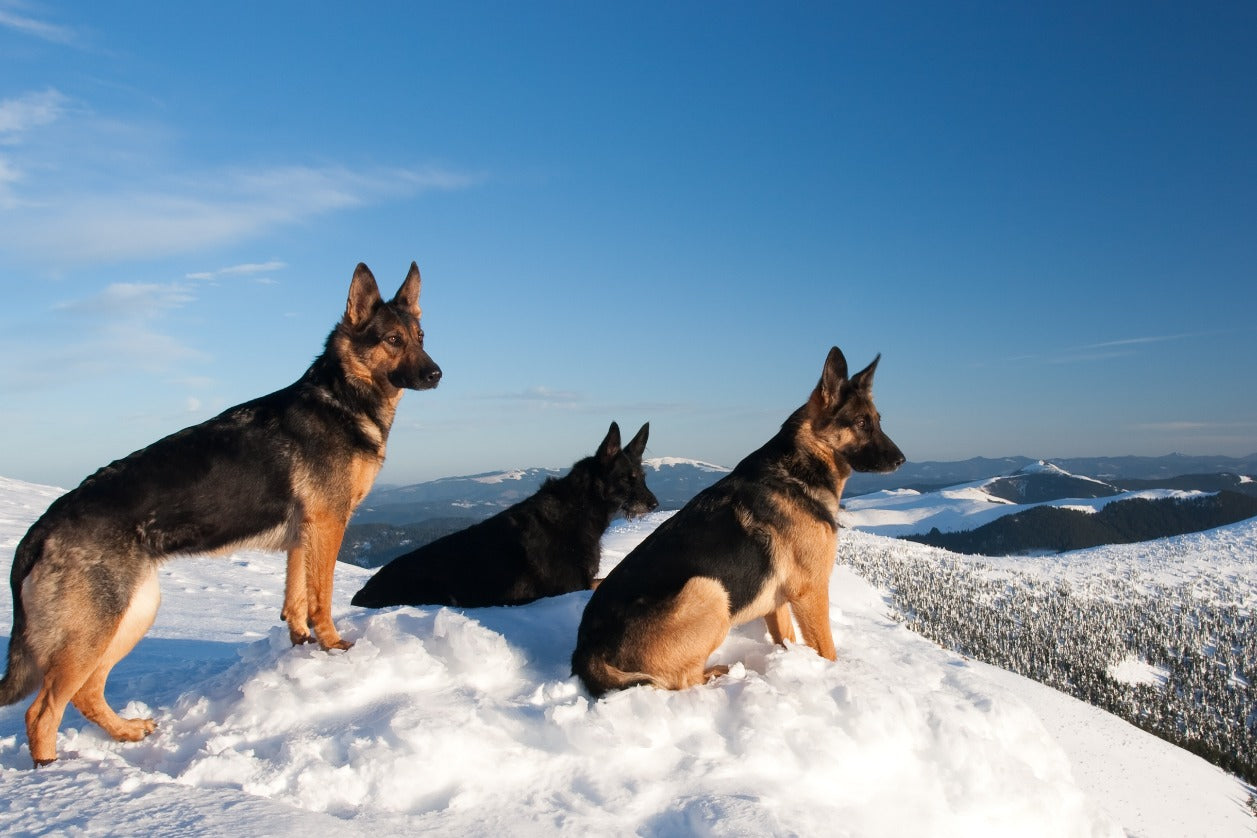
Your couch potato pooch has the DNA of wolves coursing through his veins. Maybe that's why he often runs in his sleep and even occasionally lifts his head and howls like his ancient wild ancestors. It's probably also why he doesn't have any sense when he hits the trails. He just wants to run for endless miles in pursuit of imaginary prey. As his favorite human, it's up to you to keep your dog safe and comfortable during winter runs.
Preparing for a Run with Your Dog this Winter
As much as dogs love to run in their dreams, real-life runs may be a different matter. Some dogs just don't have the energy (we're looking at you, spud!), the physique, or the stamina for running. A puppy's bones aren't sturdy enough to withstand the stress of running without possible long-term bone or joint damage.
Short-nosed (brachycephalic) breeds like Boston Terriers, Bulldogs, Pugs, or Shih Tzus are much better suited for a stroll rather than a run. Those adorably smooshed faces don't let them breathe well enough for even mildly strenuous exercise.
Even breeds like huskies that are built for long-distance running have to develop stamina before they can head out for a long run. It's up to you to train your new running partner until she's ready, willing, and able to keep up with you.
Make sure you and your dog warm up properly before going for a run this winter. The right doggie warm-up exercises will increase the oxygen in her blood, warm up her muscles, loosen her joints, and improve her alertness. All of which will lower her risk of injury and help keep her safer as she heads out for a run. That's especially important when her path might be a little more treacherous than usual!
Choose the Right Kind of Running Route
Concrete is often slippery from even a thin film of ice. If you have to run on concrete, it's better to do it after the sun has had a chance to melt that thin film of ice. Just make sure you do it before the evening's chill starts forming ice all over again! Because of its darker color, asphalt doesn't form ice as quickly as concrete. It also warms up faster. Grass is softer and offers more texture underfoot but can still be surprisingly slippery when it's coated with a thin film of ice.
Be sure to check the weather conditions before you and your pup head out. Knowing the trail conditions ahead of time is important, too. Should you bring along an insulated jacket for your small or short-haired pooch? What about weatherproof booties to provide better traction and prevent painful ice balls from forming between his toes? As a bonus, your pooch will stay warmer if his feet are dry and protected from cold surfaces.
Note: If your dog isn't used to boots, especially if he's older or arthritic, choose a flat surface to practice walking at first. He may be more prone to slipping until he gets used to them since he can't feel the surface he's walking on anymore.
Always Carry These Essentials on a Winter Run with Your Dog
Keeping your dog comfortable on a run means making sure she has everything needed to keep her warm, well-hydrated, and safe. Oh, and don't forget her favorite high-energy snacks such as doggie jerky. She's going to need them to keep her strength up!
- A silicone water bowl and thermos full of warm water will encourage your dog to stay hydrated. A collapsible silicone bowl is easy to carry and won't get ice cold, so your dog's water will stay at a more palatable temperature. Bonus — her tongue won't stick to it!
- Make sure your dog is wearing a sturdy collar with an ID tag and you use a good hands-free leash. After all, you might need both hands to break your fall if you hit a patch of ice. Knowing that your dog is still secure is one less thing to worry about on your way down!
- Since it gets dark early in winter, it's a good idea to add something reflective to your pup's outfit. There are reflective collars, tags, jackets, boots, and more available. You can also add a small light to her collar as a little extra safety precaution.
- Keep a towel and blanket handy so you can dry your dog off and keep her comfortably warm after her run.
If you give your dog a backpack to wear, it will accomplish three things. It will help keep her warmer if she isn't wearing a coat, it lets her shoulder a portion of the load, and it gives her a sense of purpose because she has an important job to do. Most dogs can easily handle carrying a silicone water bowl, a bag of treats, doggie doo bags, and probably even a portion of their own water supply.
What to Do When You Get Home After Running with Your Pet
If you encountered road salt, sand, or ice melt products while you and your dog were out enjoying the cold weather, make sure you clean his paws when you get home. If you don't, he'll clean them himself with the only thing he has available — his tongue. Since those products are abrasive at best (and toxic at worst!), you don't want him doing the job for you. A few minutes and a simple wet cloth are all you need to potentially save your pet's life.
Of course, if your dog was wearing boots while out and about, you won't have to worry about cleaning his feet or your floors after you get home. Just give his boots a quick swish or wipe them down and they'll be ready to hit those cold, wet trails again whenever the two of you are.
Are you looking for more tips on how to enjoy the outdoor life with your favorite pet? We have a Dog Blog that's packed full of information about running hiking, or just hanging out at the beach with your best bud. So send us a woof if you'd like more information about exercising with your dog. You're both sure to enjoy it no matter what the weather is like!
🐾

